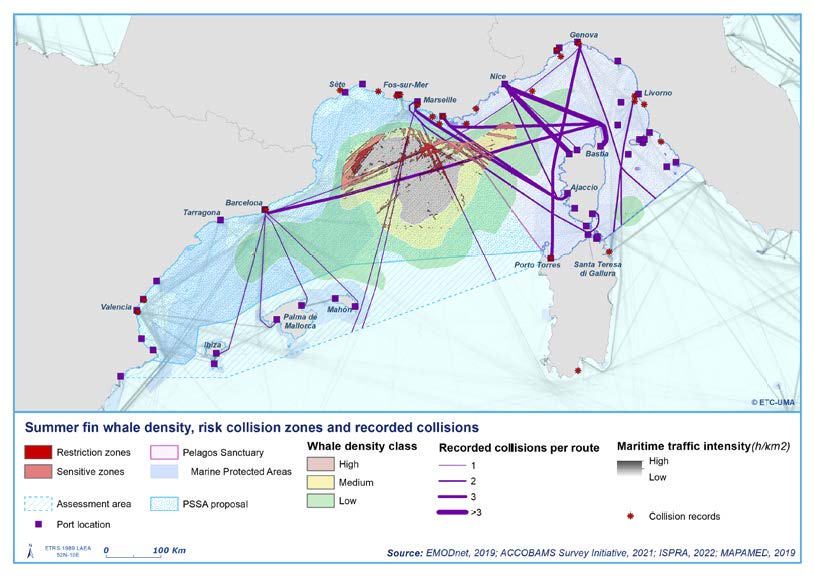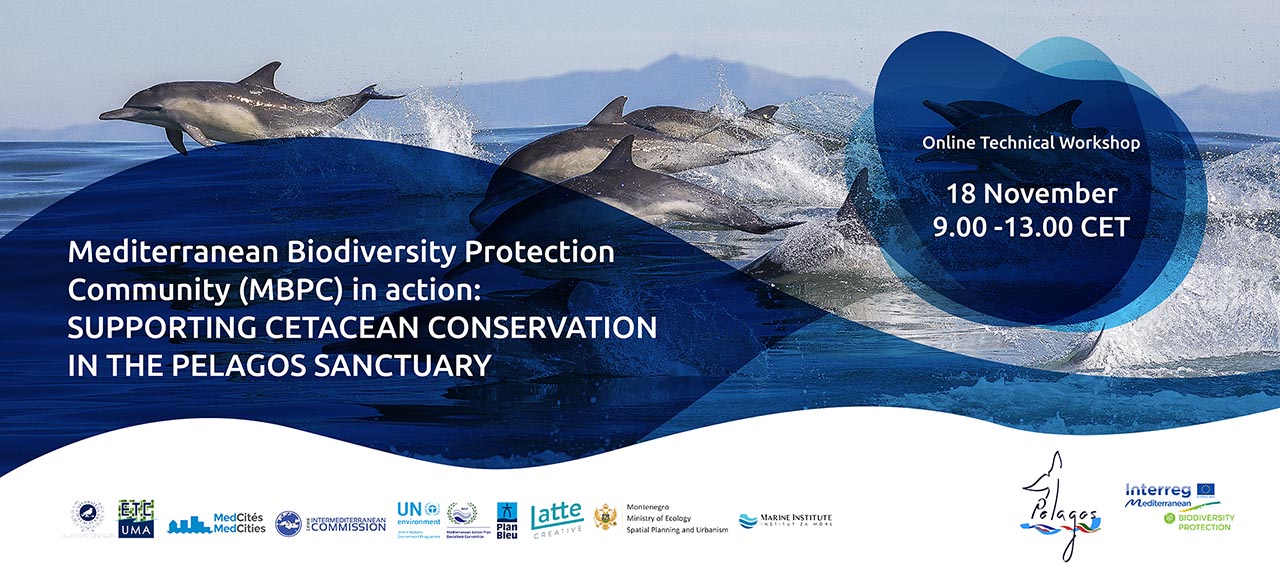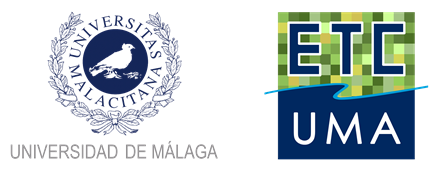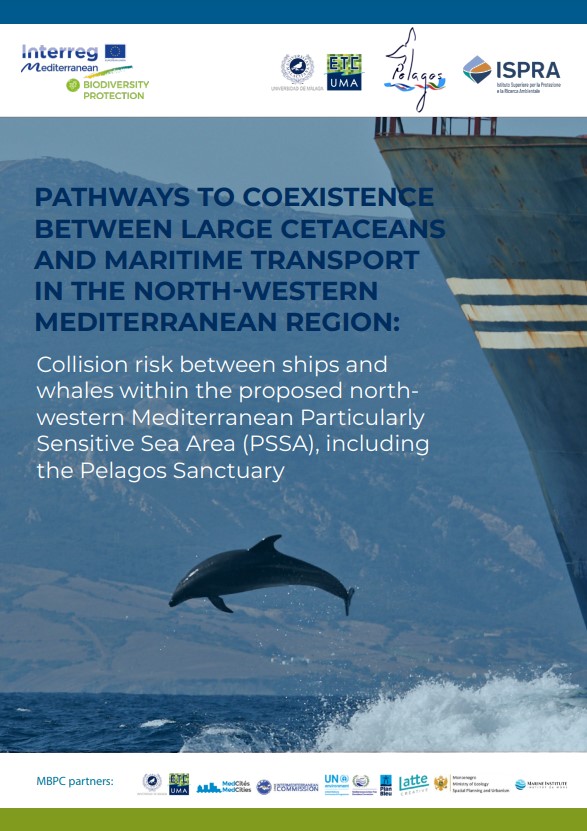A new report has been presented today, 18 November 2022, online in the frame of the cooperation between the Pelagos Permanent Secretariat and the Mediterranean Biodiversity Protection Community (MBPC), a project led by ETC-UMA. The new report, entitled Pathways to coexistence between large cetaceans and maritime transport in the north-western Mediterranean region: Collision risk between ships and whales within the proposed north-western Mediterranean Particularly Sensitive Sea Area (PSSA), including the Pelagos Sanctuary, is the result of a collaborative effort among researchers from ISPRA in Italy and ETC-UMA in Spain supported by Mediterranean institutions partnering in the MBPC project.
The ETC-UMA team has facilitated in the past years the networking and coordination activities with a variety of collaborating projects in the MBPC including AMARE+, MPA NETWORKS, FISHMPABLUE2+ and PLASTICBUSTERS MPAS through the engagement in a common Memorandum of Understanding between the MBPC and the Pelagos Sanctuary, endorsed by the EU Interreg Mediterranean programme at the end of 2021 in Monaco and later on in Italy during the Pelagos COP meeting. Among the agreed common actions, the development of the November workshop and this new report to support the Pelagos Sanctuary management plan for the protection of large cetaceans in the region.

The level of maritime traffic and the intricacy of the network of shipping routes within the Pelagos Sanctuary and the new proposed north western Mediterranean Particularly Sensitive Sea Area (PSSA is an area that needs special protection through action by International Maritime Organization (IMO) because of its significance for recognized ecological or socio-economic or scientific reasons and which may be vulnerable to damage by international maritime activities) has an impact on fin whales, particularly in spring and summer when they can be found in the region to feed. Many of these shipping routes also cross several marine protected areas (MPAs), including large Nature 2000 sites. To assist in the identification of hotspot areas in the Pelagos Sanctuary and adjacent areas concerning key biodiversity and pressures, ETC-UMA produced several spatial data analysis, maps and informative interactive dashboards with Mediterranean-level data, which are now part of this report and other products now available through the MBPC Knowledge platform online, hosted and maintained by ETC-UMA.
For more information, please contact Antonio Sánchez


Links:
Memorandum of Understanding with the Pelagos Sanctuary Secretariat
ETC-UMA Pelagos dashboard (alpha version)
MBPC Knowledge platform: biodiversity.uma.es
MBPC website: https://biodiversity-protection.interreg-med.eu/



